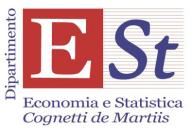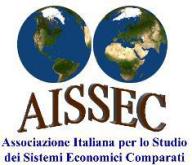by Vittorio Valli, University of Turin
If we compare the development path of South Korea, now a fully emerged economy, and Indonesia, one of the world major emerging economies, we can find some similarities and several crucial differences.
A) Similarities
Both countries suffered from colonialism, becoming fully independentin 1948-1949. They experienced thereafter an authoritarian and very repressive regime, passing to democracy in the late 1980s (South Korea) and in the late 1990s (Indonesia). Both countries had a large presence of the State in the economy, though with very different ideological approaches and economic strategies.
B) Differences
Indonesia is a much larger countrythan South Korea both in population and territory, and it has at present a larger GDP (about 1.5 times).However,South Korea has maintained since the 1960s a higher growth in education and in health; more industrialisation, innovationand research;lesscorruption;moreeasiness to do business. Indonesia has more natural resources and has been a net exporter of energy sources and raw materials, while South Korea, which heavily depends from abroad as regards energy and other natural resources, has succeeded in becoming a large net exporter ofmanufactured goods.Fromthe 1960sup to now, excluding the last 5-6 years,SouthKoreahadamuchhigherGDP growthratethanIndonesiawhile its population rate of growth diminished much faster than in Indonesia. South Korea has so surpassed and then distanced by over 3 times Indonesia’s level of per capita GDP. One secret of South Korea’s extraordinary economic performance is the massive growth in physical capital and in knowledge. The gap in knowledge vis-à-vis Indonesia has grown very much since the 1960s mainly because of the massive increase in R.&D and in the quality and quantity of learning by doing in South Korea, compared with the very low effort made in Indonesia. Beingveryrichinnaturalresources,Indonesia madelargeinvestmentsintheir exploitation, and less in services and manufacturing activities, where several modern sectors were moreoverdominated by the branches of foreign multinational.
In the past,South Korea was able to exploit muchbetter than Indonesia the advantages of the fordist-toyotistmodel of growth and of the demographic bonus, but now Indonesia, having a larger internal market, a much younger population and a lower share of elder people, can potentially better exploit the advantages of the fordist-toyotist model of growth and of the demographic bonus.
However, the fact that most modern manufacturing sectors are dominated by foreign multinationals, that the investment in knowledge is scarce, that the economy is heavily dependent on the export of raw materials, that pollution is greatly increasing, that income and wealth differentials are soaring and that the State is ofteninefficient and corrupt, all this may lead to recurrent economic and political difficulties.
Note: A more detailed analysis is given in the slides of my presentation at the 2017 OEET workshop and in two chapters of my book “ The Economic Rise of Asia: Japan, Indonesia and South Korea", Accademia University Press, Turin, 2017.









